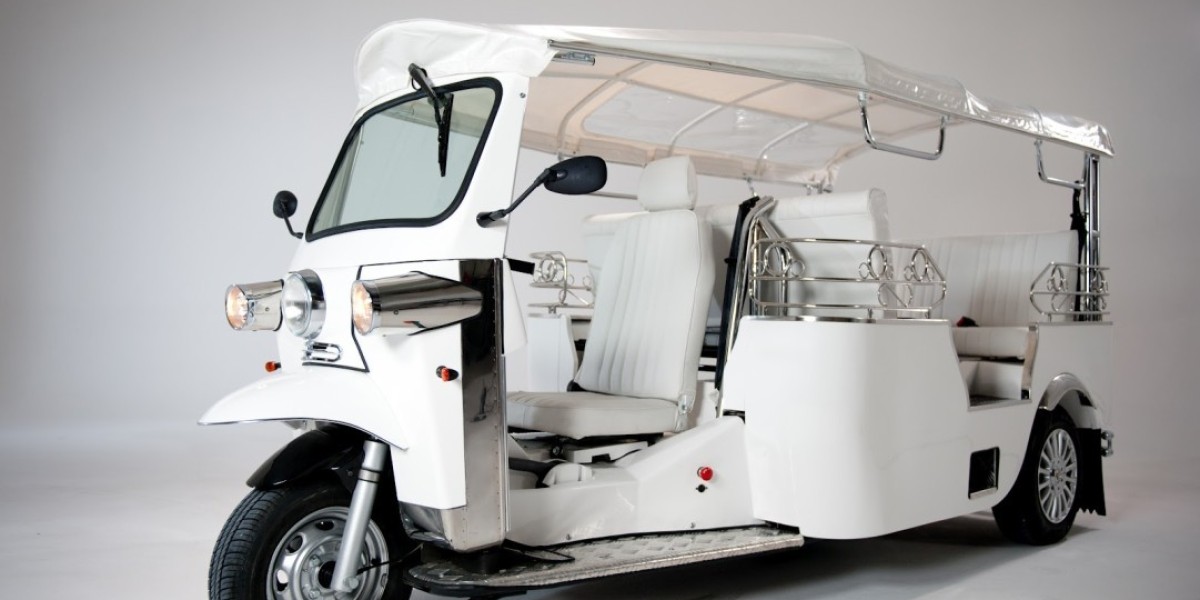The Electric Tuk Tuk: Revolutionizing Urban Transport
Introduction
The electric tuk tuk is an innovative and eco-friendly mode of transportation that combines the traditional charm of the classic tuk tuk with modern electric technology. As urban areas seek sustainable solutions to reduce pollution and traffic congestion, electric tuk tuks are emerging as a popular alternative for short-distance travel. This guide explores the features, benefits, and impact of electric tuk tuks on urban mobility.
What is an Electric Tuk Tuk?
An electric tuk tuk is a three-wheeled vehicle powered by electric motors instead of traditional gasoline engines. These vehicles are designed for urban environments, providing a compact and efficient means of transport for passengers and goods.
Key Features of Electric Tuk Tuks
1. Eco-Friendly Design
Electric tuk tuks produce zero tailpipe emissions, making them an environmentally friendly alternative to conventional vehicles. They contribute to cleaner air and reduced noise pollution in urban areas.
2. Compact Size
The compact design of electric tuk tuks allows them to navigate narrow streets and congested areas easily. Their small footprint makes them ideal for urban settings where space is limited.
3. Cost-Effective Operation
Operating an electric tuk tuk is generally cheaper than traditional vehicles due to lower fuel costs and reduced maintenance requirements. Electricity is often more affordable than gasoline, leading to significant savings for operators.
4. User-Friendly Features
Many electric tuk tuks come equipped with modern amenities such as:
- Comfortable Seating: Spacious seating for passengers.
- Cargo Space: Room for luggage or goods.
- LED Lighting: Improved visibility and safety.
- Digital Displays: Information on speed, battery level, and navigation.
Benefits of Electric Tuk Tuks
1. Sustainability
By replacing fossil fuel-powered vehicles, electric tuk tuks contribute to sustainable urban transport solutions. They help cities achieve their environmental goals and reduce carbon footprints.
2. Improved Urban Mobility
Electric tuk tuks can alleviate traffic congestion by providing an efficient alternative for short trips. Their ability to maneuver through narrow streets makes them ideal for urban environments.
3. Accessibility
Electric tuk tuks can enhance mobility for people with limited access to public transport, providing affordable and convenient transportation options.
4. Job Creation
The rise of electric tuk tuks can create new job opportunities in manufacturing, maintenance, and driving, contributing to local economies.
Challenges and Considerations
1. Charging Infrastructure
The widespread adoption of electric tuk tuks requires adequate charging infrastructure. Cities need to invest in charging stations to support operators and ensure convenience.
2. Initial Costs
While operating costs are lower, the initial purchase price of electric tuk tuks can be higher than traditional models. Financial incentives and subsidies may be necessary to encourage adoption.
3. Battery Life and Range
The range of electric tuk tuks can be limited by battery capacity. Operators need to consider daily routes and charging needs to ensure efficient operations.
4. Regulatory Framework
Governments need to establish regulations and policies to support the integration of electric tuk tuks into existing transport systems, ensuring safety and compliance.
The Future of Electric Tuk Tuks
The electric tuk tuk market is poised for growth as cities worldwide prioritize sustainable transport solutions. Innovations in battery technology, charging infrastructure, and vehicle design will further enhance the viability of electric tuk tuks.
1. Smart Technology Integration
Future electric tuk tuks may incorporate smart technologies such as GPS tracking, ride-sharing capabilities, and mobile app integrations for seamless user experiences.
2. Increased Adoption
As awareness of environmental issues grows, more cities are likely to adopt electric tuk tuks as part of their public transport systems, leading to increased visibility and acceptance.
3. Partnerships with Local Governments
Collaboration between electric tuk tuk manufacturers and local governments can facilitate the development of supportive policies and infrastructure, promoting sustainable urban mobility.
Electric tuk tuks represent a forward-thinking approach to urban transportation, combining traditional design with modern technology. Their eco-friendly nature, cost-effectiveness, and ability to navigate congested areas make them an appealing option for cities looking to enhance mobility and reduce environmental impact. As the world moves toward sustainable solutions, electric tuk tuks are set to play a significant role in the future of urban transport. Embracing this innovation can lead to cleaner, more efficient, and accessible cities for everyone.









